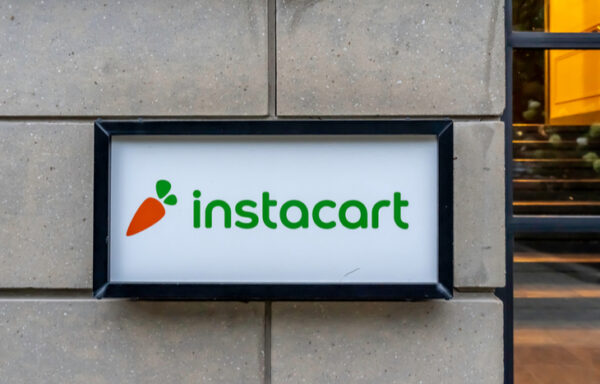Are You Ready for the “End of the World” Portfolio?
In the past, I’ve discussed our $19.9 trillion federal debt and the additional $106 trillion in unfunded liabilities for Social Security, Medicare and Medicaid.
This is hardly a new problem.
But our elected misrepresentatives refuse to do the one thing that would put us back on track: reform out-of-control entitlement spending.
Why? Because they know it would damage their re-election chances.
History has shown time and again that debt can bring a nation to its knees. Consider the Roman Empire, the Ottomans, the Soviet Union, Argentina, Greece and Puerto Rico, to name just a few.
At some point, our creditors – including the foreign countries that hold a third of our outstanding debt – could say “enough.” If they quit buying our Treasurys and start dumping them en masse, it would devastate our economy and financial markets.
For years I’ve argued that Congress would never pull a Thelma & Louise and send us barreling over the cliff.
And of course they wouldn’t intentionally. But that doesn’t mean it couldn’t happen.
The political atmosphere in Washington is toxic. Leaders of the two major parties can’t even agree on what to have for lunch… much less how to fix Medicare.
In addition, no one knows when the tipping point might be reached. When currency traders smell smoke, the reaction is instantaneous. And you can’t defuse a national debt bomb on short notice.
So, as an investor, what should you do?
For reasons I’ll discuss more fully in my next column, the answer is not to pile everything into gold, the traditional inflation hedge.
Yes, you should own some gold or gold shares. We could see a currency collapse and sharply higher inflation. But we might also experience the opposite.
Japan’s national debt, for instance, is nearly three times the size of its economy. Yet the result, so far at least, has been deflation, not inflation. And the yen is one of the world’s strongest currencies.
So my “End of the World” Portfolio is designed to hedge your bets. The idea is not to do something heroic. The goal is safety, security and preservation of capital.
With that in mind, you could…
- Put 20% of your portfolio in a laddered portfolio of AAA insured tax-free bonds. (Be sure to buy state-specific bonds if you’re in a high-tax state.) Laddering means varying your holdings between short- and medium-term bonds. (I would not be a buyer of long-term bonds in today’s world. In my view, they offer return-free risk.) Bonds are your protection against deflation and higher taxes.
- Put 20% of your portfolio in laddered foreign currency denominated bonds. These give you protection against a falling dollar and – like the munis – offer a guaranteed return of principal.
- Put 40% in a laddered portfolio of inflation-adjusted Treasurys, also AAA-rated. (For tax reasons, these are best owned in your retirement account.) This is your protection against inflation, as Uncle Sam might have to crank up the printing presses to pay the bills – a move that would likely be inflationary.
- Put 20% in a global portfolio of defensive, blue chip, dividend-paying stocks. I’m referring to food companies, healthcare companies, utilities, defense contractors, gold mining companies and the like. These could provide growth and income. Why include stocks at all? History shows that nothing has come close to the returns generated by a diversified portfolio of common stocks. Not real estate, not bonds, not gold, not cash. And it’s safer too. Over the past 200 years, an 80-20 split between bonds and stocks has been less risky than a 100% bond portfolio. (This is also a prosperity hedge. After all, we may dodge Armageddon altogether.)
I want to emphasize that no one knows when or if our debt problem will turn into a full-blown financial crisis. It depends on everything from election outcomes to economic growth to tax rates to spending cuts to entitlement reforms (or the lack thereof).
Prognosticators have told us for years that the debt would sink us. Yet we have sallied on. And possibly might for many more years.
The spoils, so far at least, have gone to the optimists, among which I ordinarily count myself.
A lot of smart investors believe the debt will be our undoing. A lot of smart investors believe it won’t.
Warren Buffett, for instance, falls into the latter category. He insists that American ingenuity and productivity will allow us to grow our way out of this.
And, indeed, vigorous economic growth could be our salvation. As I often point out, 3% growth is not 1% better than 2% growth. It’s 50% better. (And 4% growth would be twice as good.)
You may recall that we ran a multiyear budget surplus during Bill Clinton’s eight years. Yet people often forget that economic growth during his presidency averaged 3.5% and exceeded 4% in each year of his second term.
That’s a long way from the paltry 0.7% GDP growth of the first quarter – and the 2% average growth of the last decade.
If this is indeed “the new normal,” it’s a poor harbinger.
If the debt ultimately causes financial instability, things could fall apart suddenly and without warning. In such an event, the “End of the World” Portfolio – or something like it – could conserve and protect your hard-earned capital.
This issue deserves your serious consideration – and more time than I’ve been able to devote to it in these last four columns.
To educate yourself further, I recommend reading This Time Is Different: Eight Centuries of Financial Folly by Carmen M. Reinhart and Kenneth S. Rogoff, The Coming Generational Storm by Laurence J. Kotlikoff and Scott Burns, and The Debt Bomb by former Senator Tom Coburn.
None of these books are new. That means the problem is even more serious now than they describe.
And while the House recently passed a healthcare bill that makes modest reforms to Medicaid, neither the leaders of Congress nor President Trump has proposed any substantive plan to rein in spending, balance the budget or reform entitlements.
Make America great again? He might start by making her solvent again.
About Alexander Green
Alexander Green is the Chief Investment Strategist of The Oxford Club, the world’s largest financial fellowship. For 16 years, Alex worked as an investment advisor, research analyst and portfolio manager on Wall Street. After developing his extensive knowledge and achieving financial independence, he retired at the age of 43.
Since then, he has been living “the second half of his life.” He runs The Oxford Communiqué, one of the most highly regarded publications in the industry. He also operates three fast-paced trading services: The Momentum Alert, The Insider Alert and Oxford Microcap Trader. In addition, he writes for Liberty Through Wealth, a free daily e-letter focused on financial freedom.
Alex is also the author of four New York Times bestselling books: The Gone Fishin’ Portfolio: Get Wise, Get Wealthy… and Get On With Your Life; The Secret of Shelter Island: Money and What Matters; Beyond Wealth: The Road Map to a Rich Life; and An Embarrassment of Riches: Tapping Into the World’s Greatest Legacy of Wealth.






